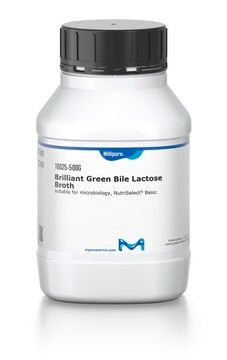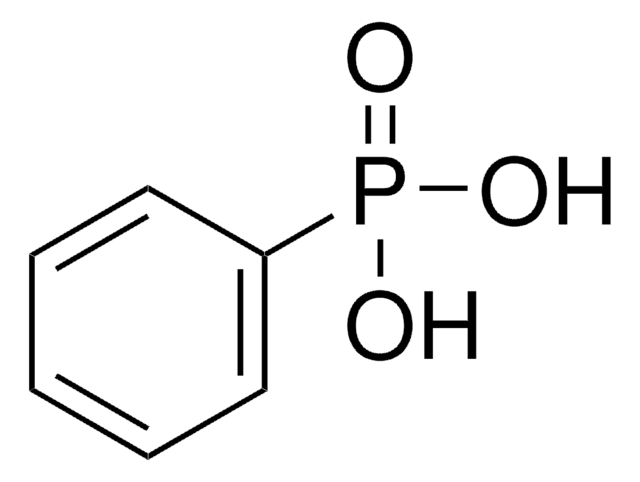91957
Monosodium methylphosphonate
99.0-101.0% (T)
Sinonimo/i:
Methanephosphonic acid monosodium salt, Methylphosphonic acid monosodium salt
About This Item
Prodotti consigliati
Livello qualitativo
Saggio
99.0-101.0% (T)
Forma fisica
crystals
Concentrazione
18.5-20.5% Na
Perdita
≤2.0% loss on drying
pH
4.5-5.1
Solubilità
water: 3.54 g/30 mL, colorless
Cationi in tracce
Al: ≤5 mg/kg
Ba: ≤5 mg/kg
Bi: ≤5 mg/kg
Ca: ≤50 mg/kg
Cd: ≤5 mg/kg
Co: ≤5 mg/kg
Cr: ≤5 mg/kg
Cu: ≤5 mg/kg
Fe: ≤5 mg/kg
K: ≤50 mg/kg
Li: ≤5 mg/kg
Mg: ≤5 mg/kg
Mn: ≤5 mg/kg
Mo: ≤5 mg/kg
Ni: ≤5 mg/kg
Pb: ≤5 mg/kg
Sr: ≤5 mg/kg
Zn: ≤5 mg/kg
Assorbanza UV
λ: 260 nm Amax: ≤0.2
λ: 280 nm Amax: ≤0.07
Compatibilità
no residue for filter test
Stringa SMILE
O=P(C)(O[Na])O
InChI
1S/CH5O3P.Na/c1-5(2,3)4;/h1H3,(H2,2,3,4);/q;+1/p-1
CZVWTNTXBUVAFR-UHFFFAOYSA-M
Applicazioni
Avvertenze
Danger
Indicazioni di pericolo
Classi di pericolo
Acute Tox. 4 Oral - Eye Dam. 1 - Skin Corr. 1B
Codice della classe di stoccaggio
8A - Combustible corrosive hazardous materials
Classe di pericolosità dell'acqua (WGK)
WGK 3
Punto d’infiammabilità (°F)
Not applicable
Punto d’infiammabilità (°C)
Not applicable
Certificati d'analisi (COA)
Cerca il Certificati d'analisi (COA) digitando il numero di lotto/batch corrispondente. I numeri di lotto o di batch sono stampati sull'etichetta dei prodotti dopo la parola ‘Lotto’ o ‘Batch’.
Possiedi già questo prodotto?
I documenti relativi ai prodotti acquistati recentemente sono disponibili nell’Archivio dei documenti.
I clienti hanno visto anche
Il team dei nostri ricercatori vanta grande esperienza in tutte le aree della ricerca quali Life Science, scienza dei materiali, sintesi chimica, cromatografia, discipline analitiche, ecc..
Contatta l'Assistenza Tecnica.


